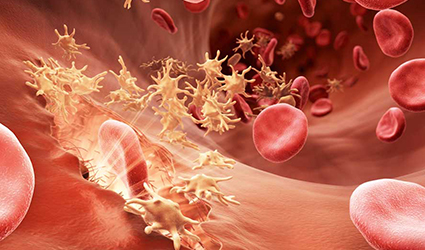One Stop Solution Against Haemophilia
June 8, 2018
Source: medicalxpress
 747
747

Hemophilia B is defined as a bleeding disorder, caused by a defect in genes coded for a protein named clotting factor IX (FIX). More than 400, 000 people are affected with hemophilia B worldwide.
Currently, hemophilia patients are given injections containing purified FIX made in animal cells, as often as a few times per week. But the therapy becomes less effective the longer it is administered as well as expensive and time-consuming. By conducting research work in mice, scientists from Salk Institute developed a single injection of messenger RNA strands encoding the FIX gene. Due to the fact that this was also time-consuming, the Salk scientists transplanted healthy liver cells through the spleen, which were capable of producing FIX gene into patients.
In order to produce the healthy liver cells, stem cell strategies were used to produce enough protein to form normal blood clots. Immune complications accompanying cell therapies could be avoided, but more clinical work is needed further in this regard.
Suvasini Ramaswamy, a former Salk research associate and the lead investigator in the Verma lab said, “The appeal of a cell-based approach is that you minimize the number of treatments that a patient needs; a lot of things have to happen before this can go into humans; rather than constant injections, you can do this in one shot."
By DduRead more on
- Things to Know before Buying Newborn Baby Incubators March 31, 2022
- Highly Resistant Food Poisoning Bug Responds to Antibiotics September 6, 2018
- Smartphone Based Diagnosis to Identify Mosquitoes Transmitting Infection September 5, 2018
- 3 Natural Plant Extracts Manufacturers on Drugdu.com September 4, 2018
- Shenzhen Chuanggan – Health Assessment Facility Supplier September 4, 2018
your submission has already been received.
OK
Subscribe
Please enter a valid Email address!
Submit
The most relevant industry news & insight will be sent to you every two weeks.



